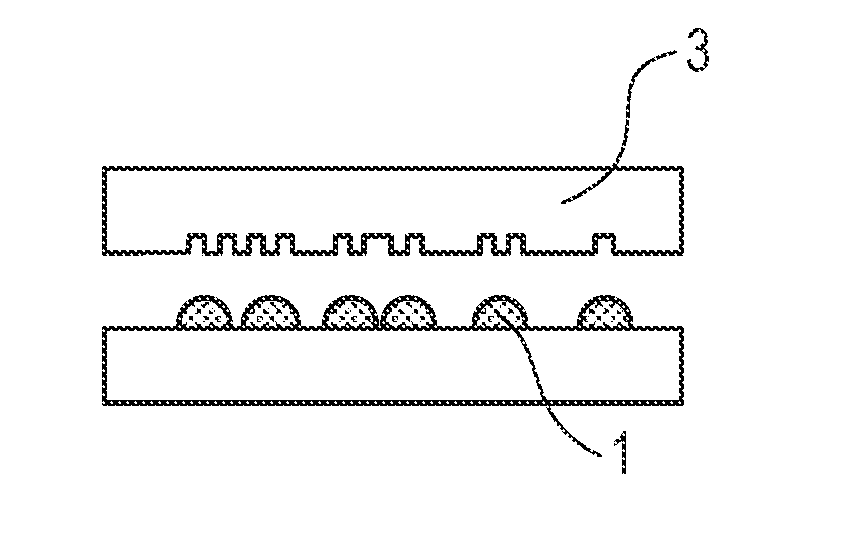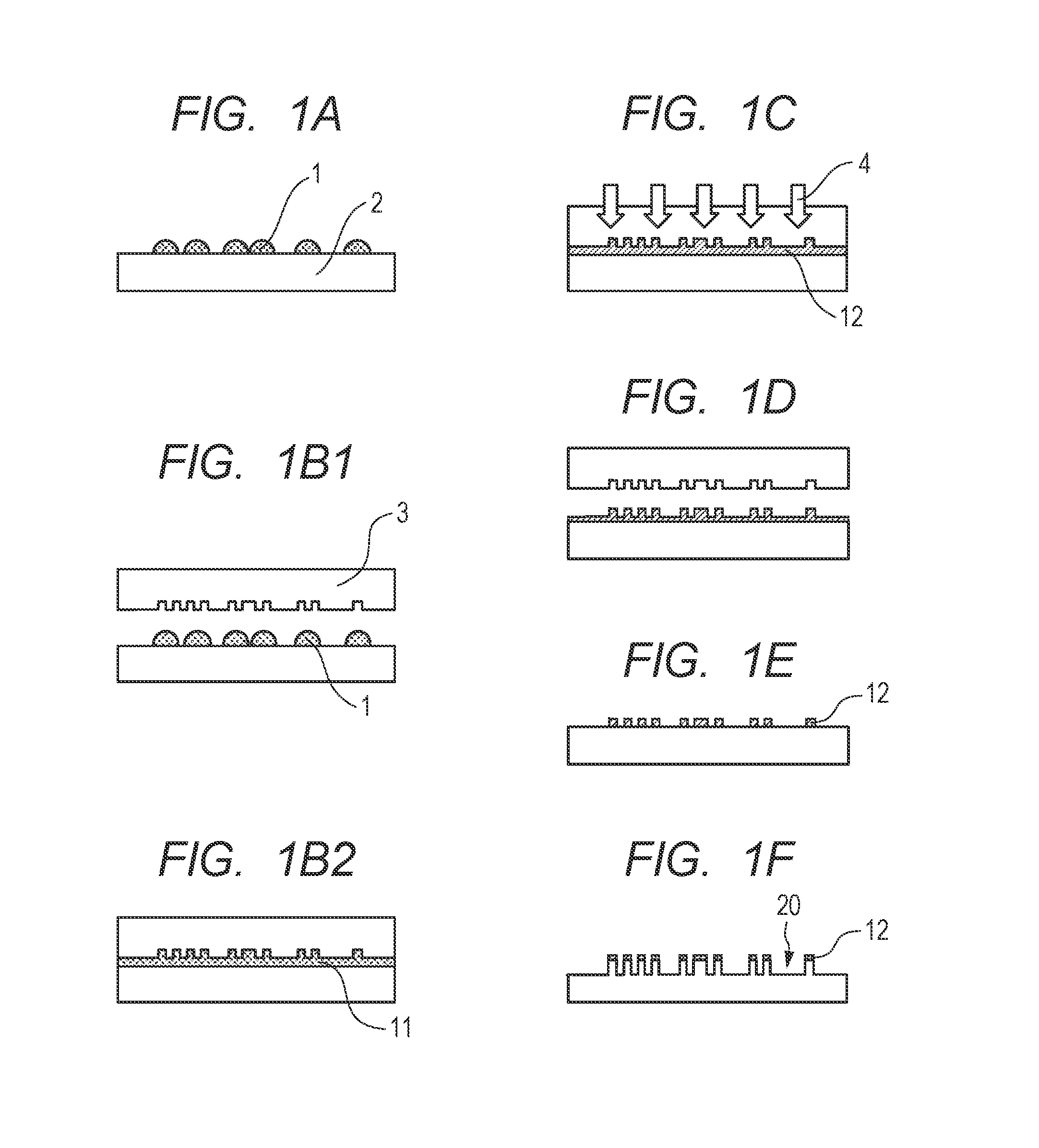Curable composition, film, and method of producing film
a technology of curable composition and curable composition, which is applied in the direction of non-metallic protective coating applications, circuit masks, printing, etc., can solve the problem of slow filling speed of curable composition required when a mold is pressed against curable composition to fill curable composition into its fine irregular pattern, and achieve fast filling speed and excellent releasability
- Summary
- Abstract
- Description
- Claims
- Application Information
AI Technical Summary
Benefits of technology
Problems solved by technology
Method used
Image
Examples
example 1
Production of Curable Composition (D1)
[0193]First, reagents listed below were mixed.
[0194]Polymerization initiator (A1): 3 parts
[0195]Polymerizable compound (B1): 9 parts
[0196]Polymerizable compound (B2): 38 parts
[0197]Polymerizable compound (B3): 47 parts
[0198]Internal addition type release agent (C1): 0.5 part
[0199]Next, the resultant mixed solution was filtered with a filter made of ultrahigh molecular weight polyethylene having a mesh of 5 nm to provide a curable composition (D1).
[0200]The physical properties of the resultant curable composition were measured and evaluated by methods to be described below.
[0201](1) Surface Tension
[0202]The surface tension of the curable composition at 25° C. was measured by a plate method involving using a platinum plate. It should be noted that the measurement was performed with an automatic surface tension meter DY-300 (manufactured by Kyowa Interface Science Co., Ltd.) under the conditions of a number of times of measurement of 5 and a pre-we...
example 2
Production of Curable Composition (D2)
[0214]A curable composition (D2) was obtained by the same method as that of Example 1 except that in Example 1, 1.6 parts of (C2) was added as an internal addition type release agent instead of the addition of 0.5 part of (C1).
[0215]In addition, the physical properties of the curable composition (D2) of this example were measured and evaluated by the same methods as those of Example 1. As a result, the composition had a surface tension of 33.16 mN / m, a viscosity of 4.14 mPa·s, a mold contact angle of 4.6°, and a substrate contact angle of 4.7°.
[0216]In addition, the value (γ1−γ2) / γ1 determined by using the value of the surface tension (33.37 mN / m) of a curable composition (D6) of Comparative Example 2 to be described later was as follows: (γ1−γ2) / γ1=(33.16−33.37) / 33.16=−0.6%.
example 3
Production of Curable Composition (D3)
[0217]A curable composition (D3) was obtained by the same method as that of Example 1 except that in Example 1, 0.9 part of (C3) was added as an internal addition type release agent instead of the addition of 0.5 part of (C1).
[0218]In addition, the physical properties of the curable composition (D3) of this example were measured and evaluated by the same methods as those of Example 1. As a result, the composition had a surface tension of 34.42 mN / m, a viscosity of 3.86 mPa·s, a mold contact angle of 5.9°, and a substrate contact angle of 4.9°.
[0219]In addition, the value (γ1−γ2) / γ1 determined by using the value of the surface tension (33.37 mN / m) of a curable composition (D6) of Comparative Example 2 to be described later was as follows: (γ1−γ2) / γ1=(34.42−33.37) / 34.42=3.1%.
PUM
| Property | Measurement | Unit |
|---|---|---|
| θ | aaaaa | aaaaa |
| temperature | aaaaa | aaaaa |
| temperature | aaaaa | aaaaa |
Abstract
Description
Claims
Application Information
 Login to View More
Login to View More - R&D
- Intellectual Property
- Life Sciences
- Materials
- Tech Scout
- Unparalleled Data Quality
- Higher Quality Content
- 60% Fewer Hallucinations
Browse by: Latest US Patents, China's latest patents, Technical Efficacy Thesaurus, Application Domain, Technology Topic, Popular Technical Reports.
© 2025 PatSnap. All rights reserved.Legal|Privacy policy|Modern Slavery Act Transparency Statement|Sitemap|About US| Contact US: help@patsnap.com



